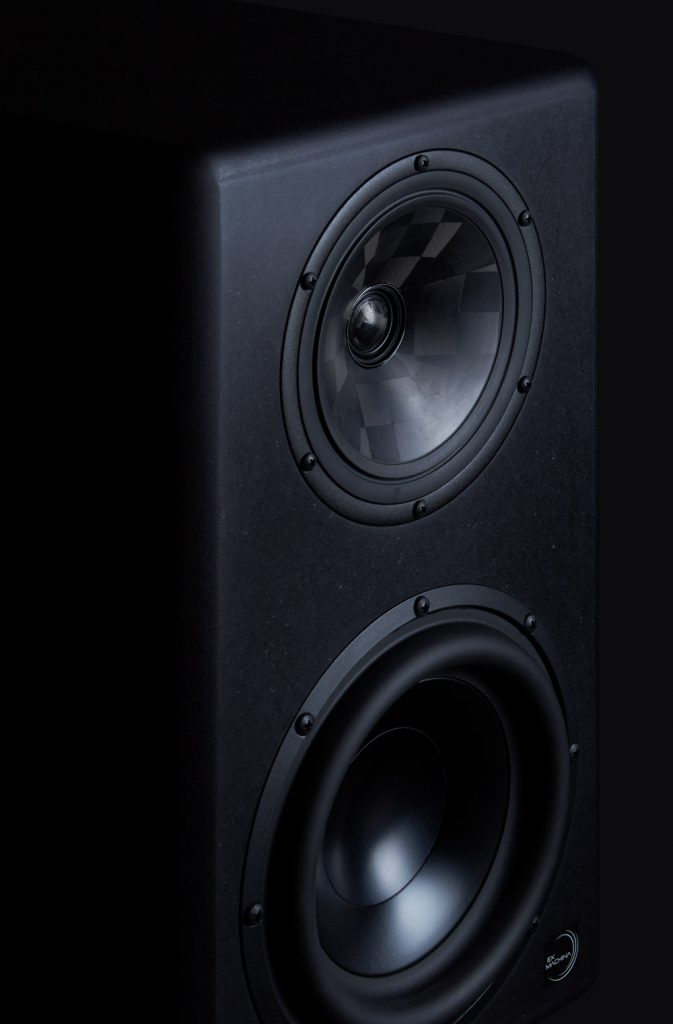MANON GRANDJEAN CHOOSES EX MACHINA
Award winning mix engineer Manon Grandjean chooses Ex Machina for her main studio monitors.
Manon, well-known not only for her incredible ear and attention to detail, but also for her success working with artists such as Stormzy, Dave, AJ Tracey, London Grammar, Anne Marie, Kasabian and Little Mix, was proud to choose the Pulsars from Brooklyn-based Ex Machina Soundworks.

“When I first played some tracks on the Pulsars, I loved them instantly and for me that’s what is important when choosing speakers more than the specs. The stereo image and centre are really defined.”
Not that the Pulsars are shabby with regards to their specification either; their frequency response is amongst the flattest on the market, boasting +/-1dB from 35hz up to 32khz, and with a market-leading linear phase of +/-15° from 20hz up to 30khz. Note that the phase specification is often greatly overlooked (and dubiously not published by many manufacturers!) when choosing monitors, yet it is arguably at least as important as the frequency response itself and is a big part of the reason why Manon enjoys the precise stereo image. She continues:
“Everything translates well and feels balanced. The low end is amazing, I don’t need a sub anymore!”
The Pulsars driver compliment is such that there is no need for an additional external subwoofer; Ex Machina have cleverly implemented one of the best thought-out designs in modern studio monitoring. Other coaxial monitors on the market are sometimes two-way and feature a tweeter (that produces a very directional frequency range) mounted in the centre of a woofer (which produces lower, more omni-directional frequencies) and consequently a lot of the benefits of the monitor being a coaxial design are lost or wasted. The competing three-way designs have a tweeter and mid-range driver (both producing directional and highly phase-dependant frequencies) next to each other as found on most traditional speakers, and mount these in front of the woofer, which is producing largely omni-directional frequencies. Again, these designs fail to take full advantage of the benefits of a coaxial design.
For more information about PMC studio monitors, Click here.
Ex Machina have implemented the dual-concentric arrangement flawlessly. The tweeter and mid-range driver deal with all frequencies from 200hz and up, meaning that all the frequencies our human ears are most sensitive to, and the vast majority of the audio content, is coming from two coaxially-mounted drivers in near-perfect phase.
This leaves the 8″ long-throw subwoofer to deal with all the less-directional frequency content, 200hz and below, and consequently acting like a true subwoofer. Being of a long-throw design, it in fact moves as much air as a traditional 12″ sub; and there are two of these per pair! Headroom is not a problem except in the largest of rooms in which case it’s larger sibling, the Quasar, is more capable.
“I honestly couldn’t find anything that I didn’t like. For me it’s a no brainer, after a couple of hours of working on them I had to get a pair. They are amazing and they also look super slick!”
At SX Pro, we are inclined to agree with Manon. Coupled with a stunning Sound on Sound review by Phil Ward, we are seeing high-end studio professionals turning to the new guard in the world of studio monitoring. The demands of the studio professional have changed in the last twenty years, and even more so in the last few with COVID pushing many professionals into a smaller home-based studio.
As such, there is a need for a relatively compact monitor that produces main-monitor-like frequencies with zero-compromise, which is where the Pulsar excels and is arguably second-to-none.
Click here to read more about the Ex Machina Pulsars.
Click here to read the Sound on Sound review of the Ex Machina Pulsars.
For more information about PMC studio monitors, Click here.
